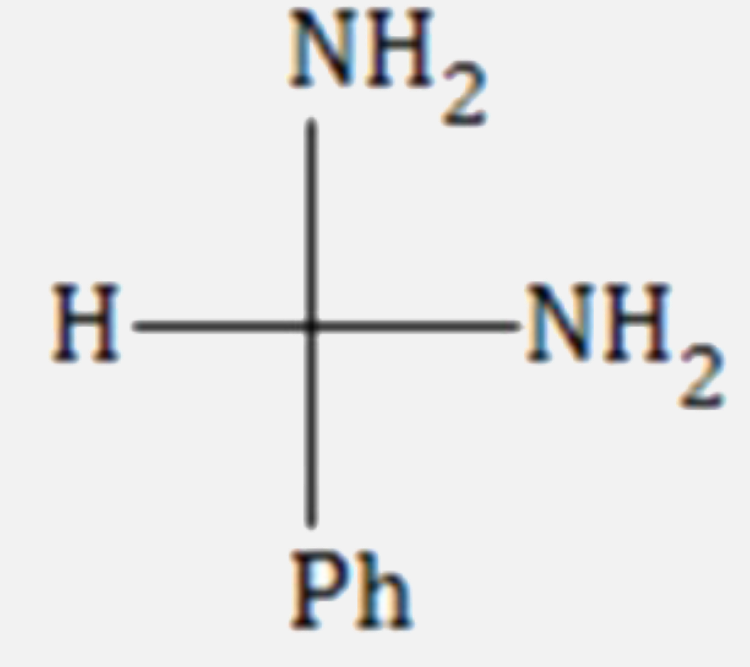Which of the following compounds can form a Zwitter ion ?
Benzoic acid
Acetanilide
Aniline
Glycine
The correct Answer is:D
To determine which of the given compounds can form a zwitterion, we need to understand the structure and characteristics of zwitterions.
1. Definition of Zwitterion: A zwitterion is a molecule that has both positive and negative charges, but is overall neutral. Zwitterions are commonly found in amino acids, which contain both an amino group (-NH2) and a carboxylic acid group (-COOH).
2. Identify the Structure of Amino Acids: The general structure of an alpha amino acid can be represented as:
NH2CHRCOOH
Here, R represents the side chain which can vary among different amino acids.
3. Behavior in Different pH Conditions:
- At pH < 7 (Acidic Medium): The carboxylic acid group is predominantly in its protonated form (-COOH), and the amino group accepts a proton to become -NH3^+. This results in a structure where there is a positive charge on the amino group and a neutral charge on the carboxylic group.
- At pH = 7 (Neutral Medium): The carboxylic acid group loses a proton and becomes a carboxylate ion (-COO^-), while the amino group remains protonated (-NH3^+). This results in a zwitterion with both a positive and a negative charge.
- At pH > 7 (Basic Medium): The carboxylic group remains in its deprotonated form (-COO^-), and the amino group is in its neutral form (-NH2). Here, the zwitterion form is not present.
4. Identify the Given Compounds: Among the options provided, we need to look for a compound that contains both an amino group and a carboxylic acid group. This is essential for zwitterion formation.
5. Conclusion: The only compound that fits this description is glycine (option D), which is the simplest amino acid. Its structure at neutral pH (pH = 7) can be represented as:
NH+3CH2COO−
This confirms that glycine can form a zwitterion.
Final Answer:
The compound that can form a zwitterion is option D: Glycine.
NH2CHRCOOH
Here, R represents the side chain which can vary among different amino acids.
- At pH < 7 (Acidic Medium): The carboxylic acid group is predominantly in its protonated form (-COOH), and the amino group accepts a proton to become -NH3^+. This results in a structure where there is a positive charge on the amino group and a neutral charge on the carboxylic group.
- At pH = 7 (Neutral Medium): The carboxylic acid group loses a proton and becomes a carboxylate ion (-COO^-), while the amino group remains protonated (-NH3^+). This results in a zwitterion with both a positive and a negative charge.
- At pH > 7 (Basic Medium): The carboxylic group remains in its deprotonated form (-COO^-), and the amino group is in its neutral form (-NH2). Here, the zwitterion form is not present.
NH+3CH2COO−
This confirms that glycine can form a zwitterion.
The compound that can form a zwitterion is option D: Glycine.
Topper's Solved these Questions
Similar Questions
Knowledge Check
Which of the following compounds can form a zwitterion ?
ABenzoic acidBAcetanilideCAnilineDGlycineWhich of the following compounds can form a Zwitter ion ?
AAnilineBAcetanilideCGlycineDBenzoic acidWhich of the following compounds can form a Zwitter ion ?
A B
B C
C D
D
Which of the following compound can form hydrogen bonds
View SolutionWhich of the following compounds can form hydrogen bond?
View SolutionWhich of the following compounds can form H-bonding with each other ?
View SolutionWhich of the following compounds can react with base to form salt?
View SolutionCyanohydrin of which of the following compound can forms lactic and
View Solution

